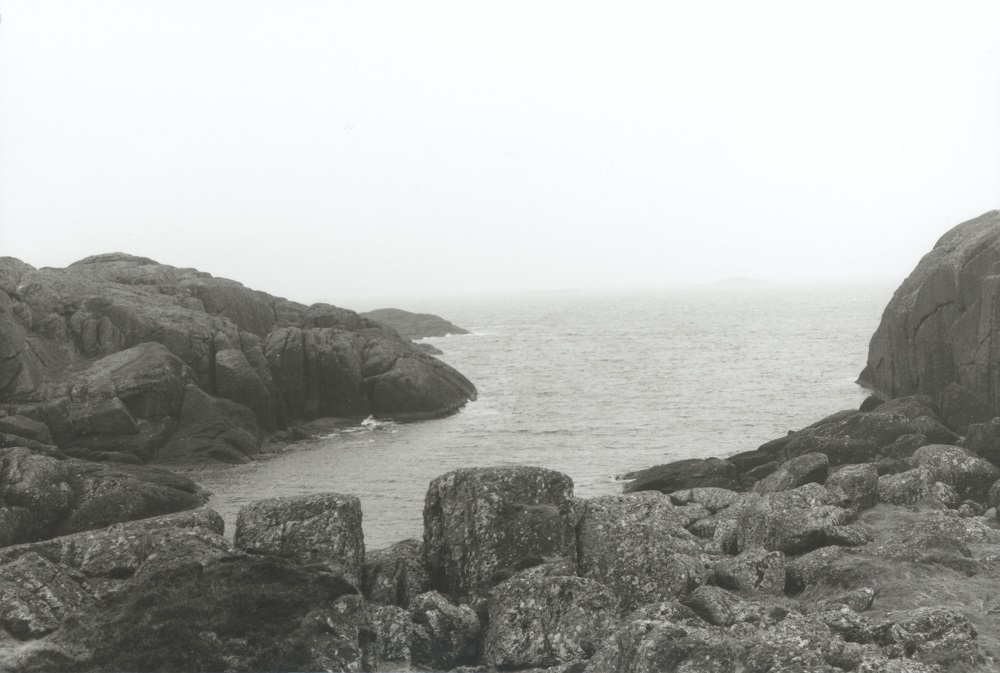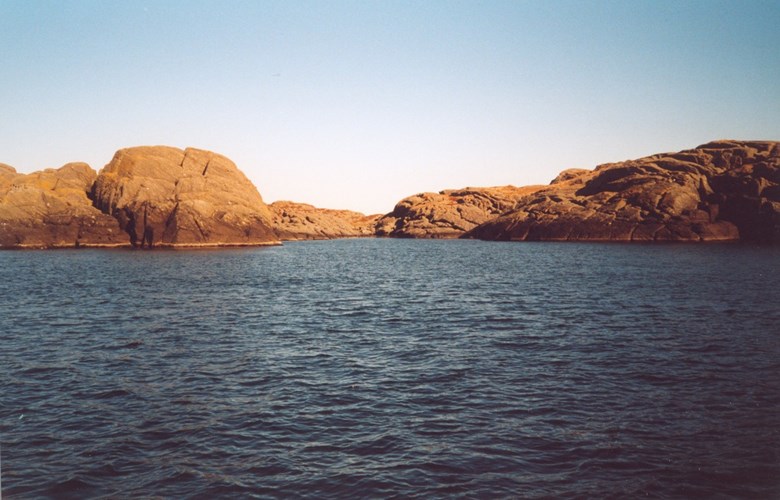The first in Solund
A little more than one kilometre to the east of Utvær, the island of Begla rises steep out of the ocean. This is no place to stay except for seabirds. Yet, written sources tell of settlements here, unlikely though it may seem. Only on the east side was it possible for rowboats to land in good weather, so the women from Utvær could milk the few cows which grazed here. On the south-west side, toward the open North Sea, there is a bay, barely a hundred metres long, with ocean-scrubbed, black rock sides. In a scree there, the first weapons depot in Solund was located. It is believed that a fishing vessel from Møre brought the cargo, in the early spring of 1942.
"Johannes i Begla"
Onboard the vessel was also a member of the Linge company, Paul Kråkenes, from Solund, but who lived in Gulen. He knew well the brothers Harald and Peter Henriksen at Husøy. Paul went to the south of Gulen and picked up the two brothers. Together they unloaded the weapons and took them up to a scree, where they buried them. Four men of the Linge company were responsible for the further transport. The contact name was "Johannes i Begla". Noone bore that name.
Later the depot was discovered, cases were opened, and one case left in the open air. The Henriksen brothers took care of that. They had a shock, but chose not to go under cover for fear of reprisals against their families. No reports about the depot were ever registered.
Black smoke cloud over Beglevågen
A dramatic arrest in Sunnhordland, where a member of the Linge company was brutally tortured for days, resulted in the disclosure of the cover-up name. On 2 May, 1943 the Germans took action. A torpedo boat arrived from Bergen. At Utvær, they found two men with the name of Johannes. The two were forced to go with the Germans to Begla and point out the depot. From Husøy the navy vessel was observed, and a black smoke cloud above the bay Beglevågen. There was still time to escape, but fear for their families held them back. The next day the Henriksen brothers were apprehended on suspicion. The depot was located on their property, and in addition, the Germans found a piece of foreign chocolate in their house.

Christmas in Sachsenhausen
The torpedo boat with Peter and Harald Henriksen onboard immediately went to Bergen, where they were locked in one-man cells at the Bergen county prison. There were interrogations and torture all summer. The two Kråkenes brothers, who had helped carry the cases ashore, were arrested 2-3 weeks after the Begla action. All four were taken to Oslo in December, and on 9 December the D/S Donau took them to Germany and several prison camps. Peter and Harald were in the same camps, in different prison cells, yet they knew of each other. Since Peter was the main suspect, he was given the roughest treatment.
Two years are many hours
At the liberation both brothers were completely enfeebled. Peter was carried out of the camp on a stretcher. Typhoid fever, tuberculosis, and torture led to long hospital treatments before they could go home to Solund. Neither ever regained their strength, but they both started families. Harald took over at Husøy, and Peter lived in Fana, outside Bergen. Their close relationship lasted for life.
The two Kråkenes brothers also survived, by a hair's breadth. The Begla affair was fortunately limited to these four.


